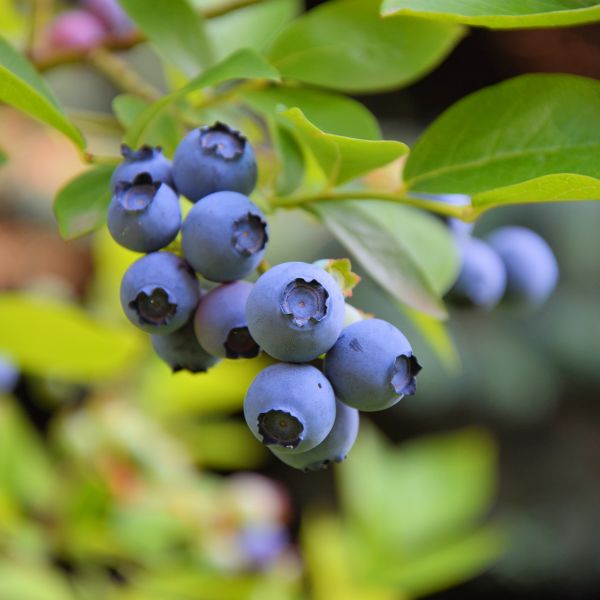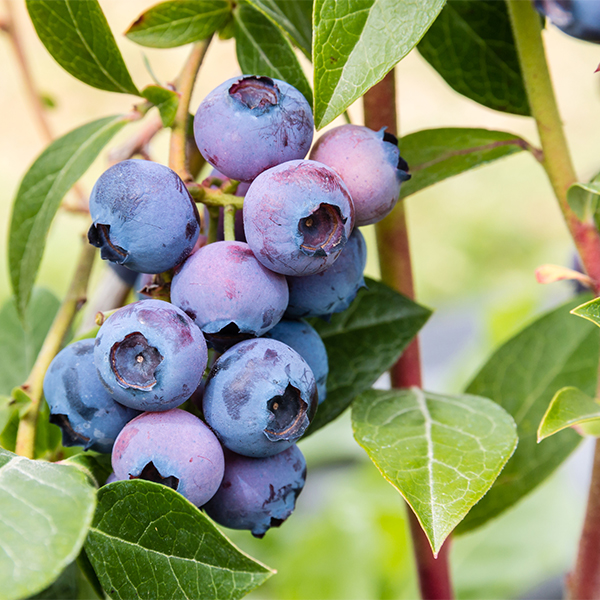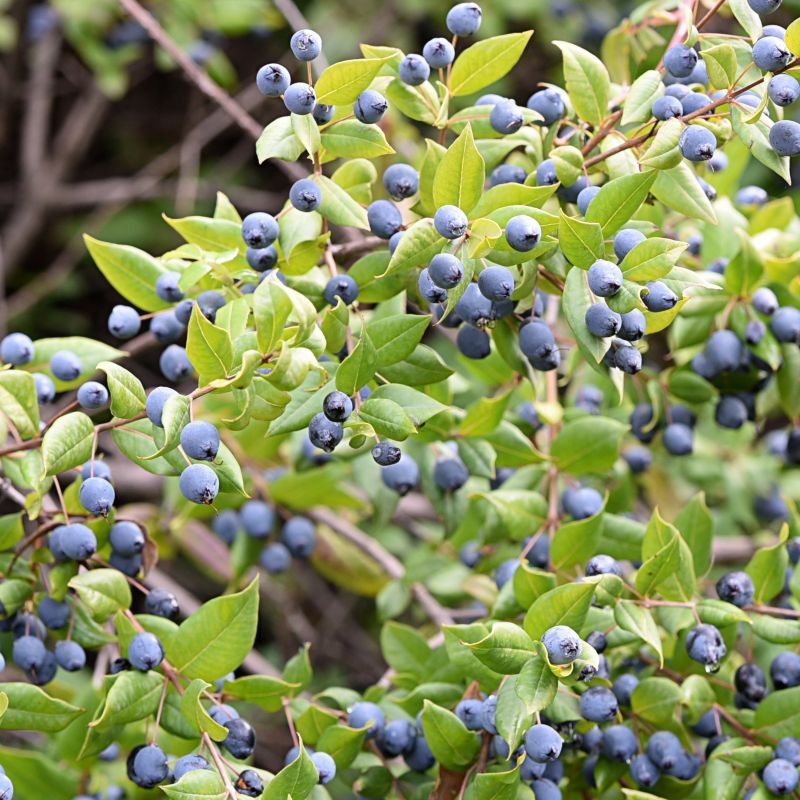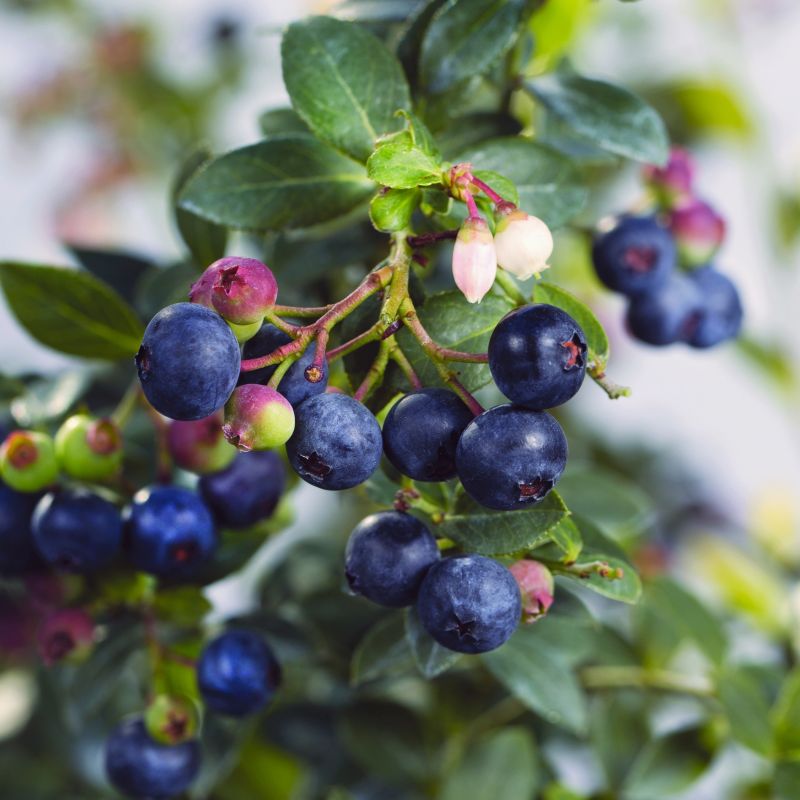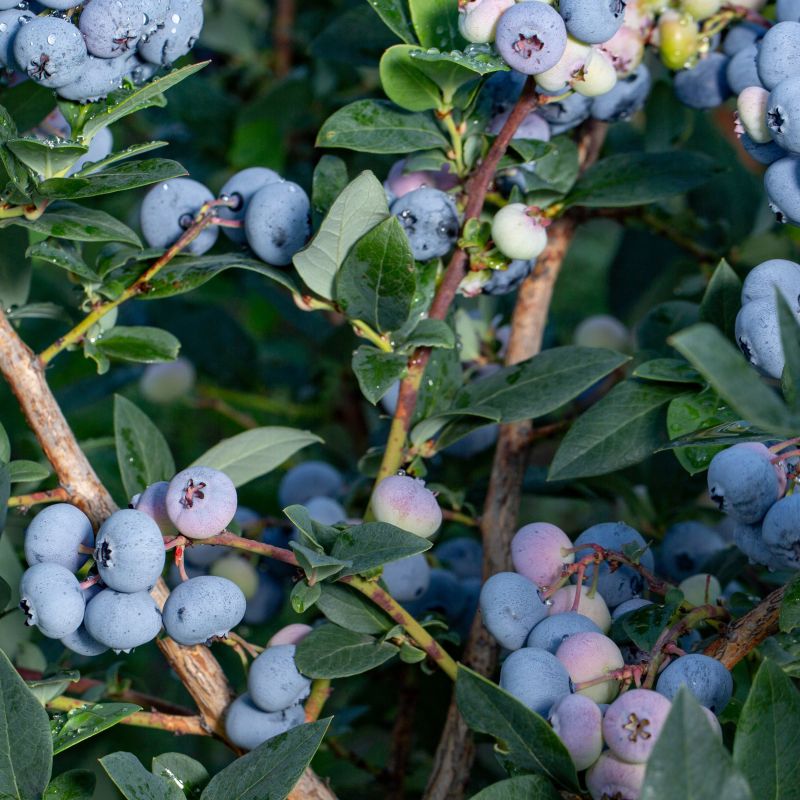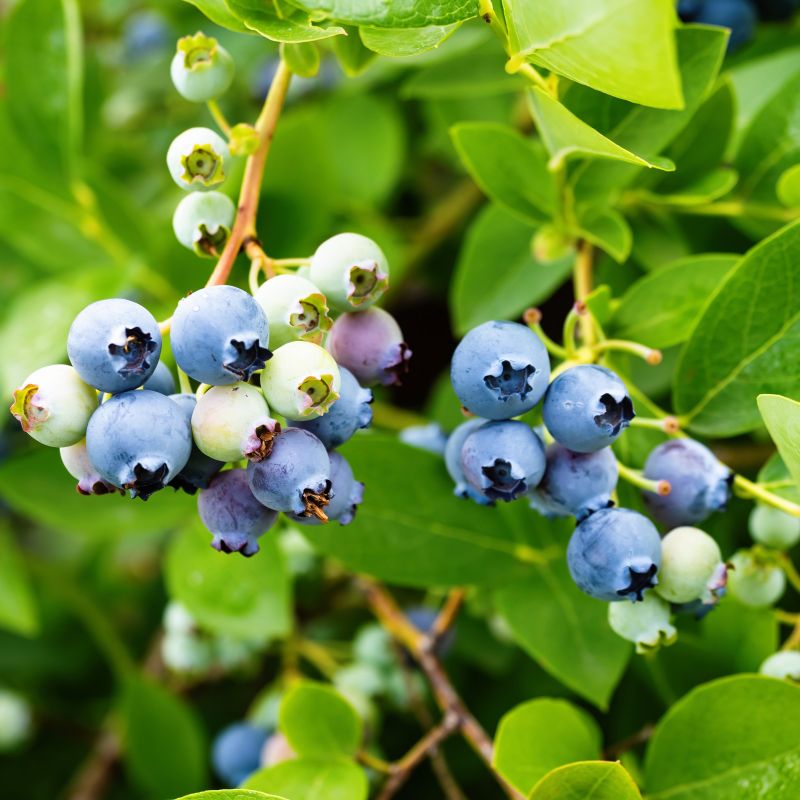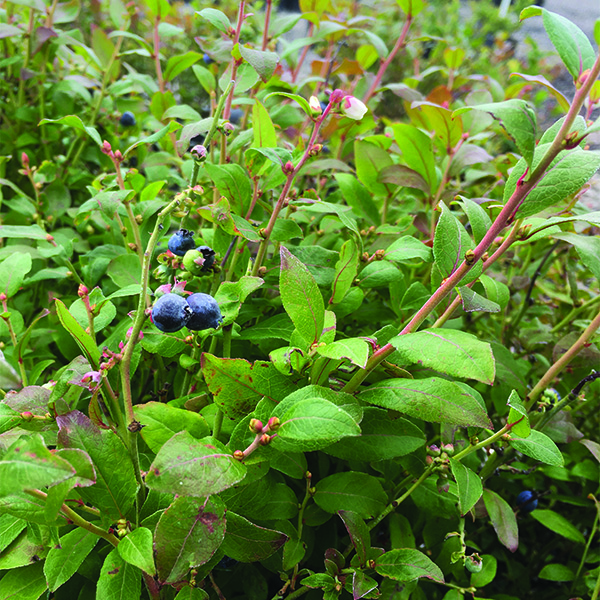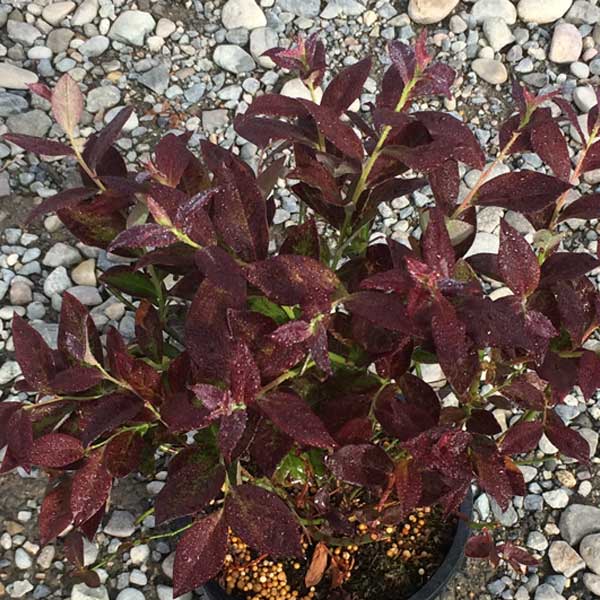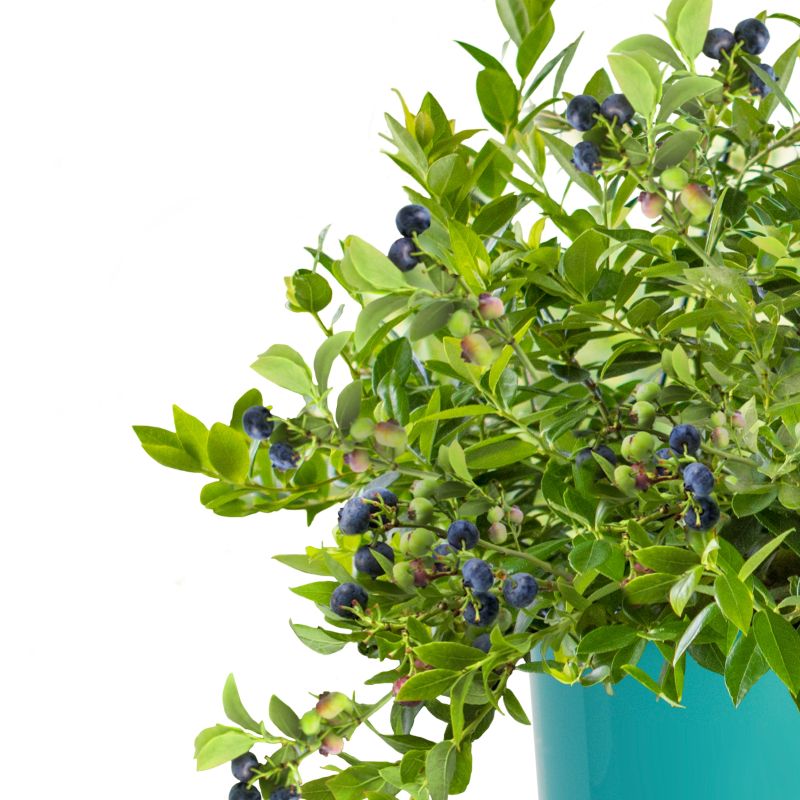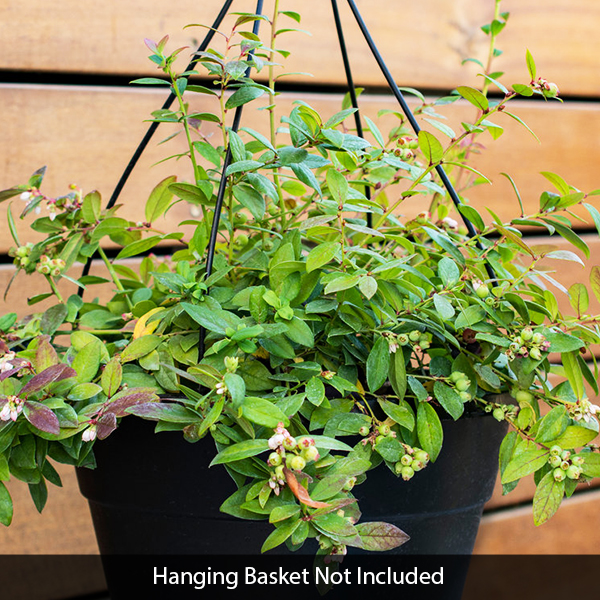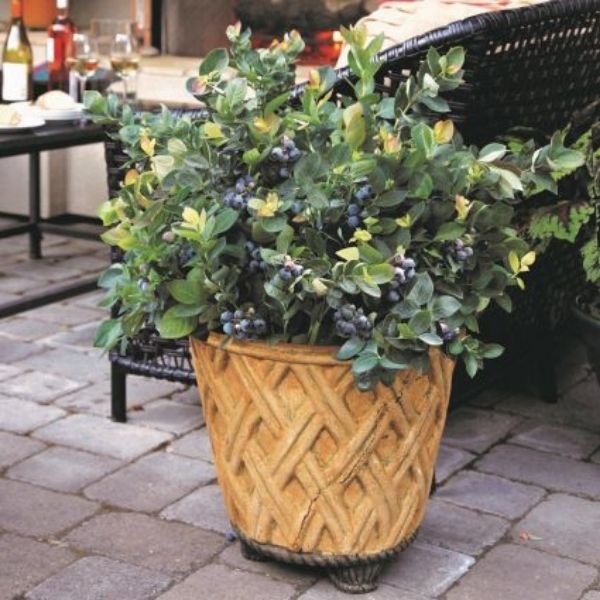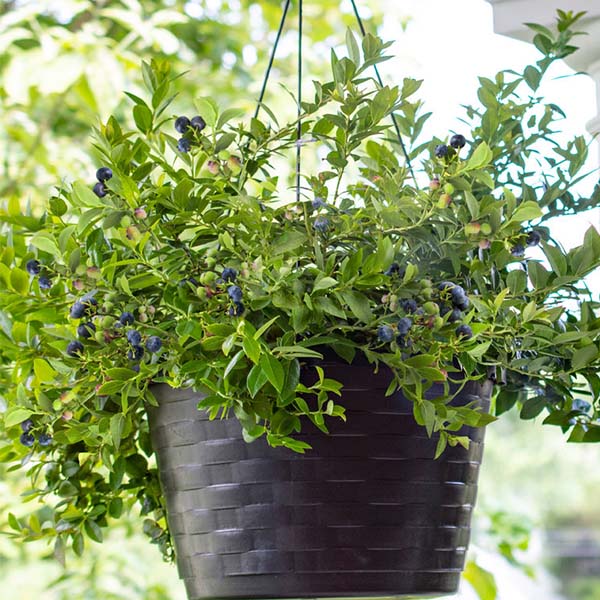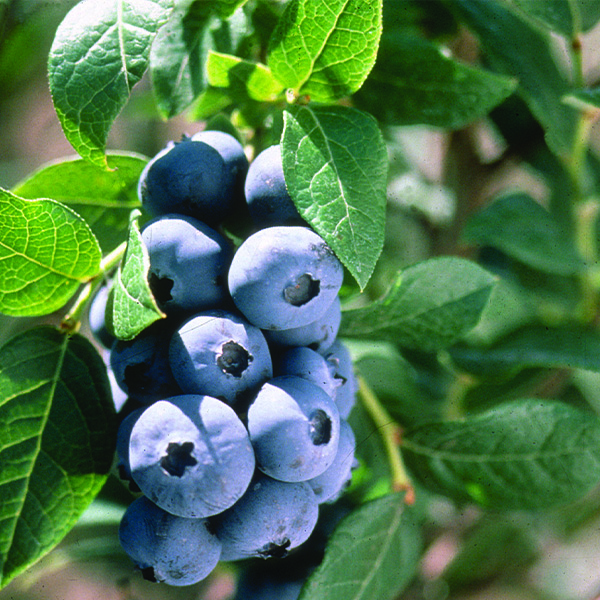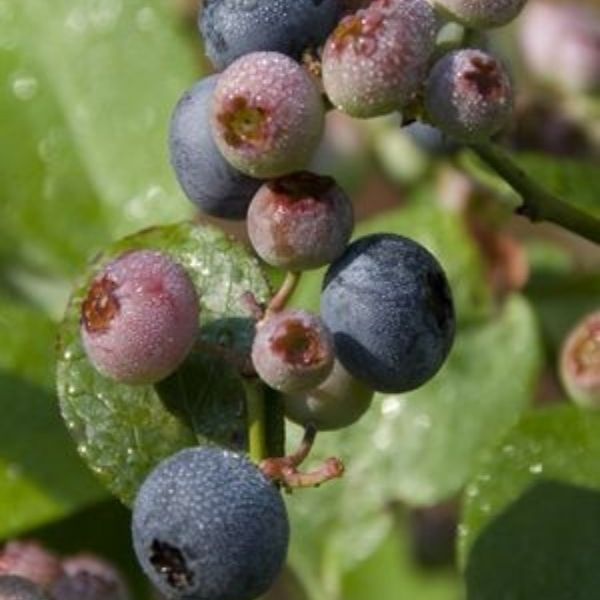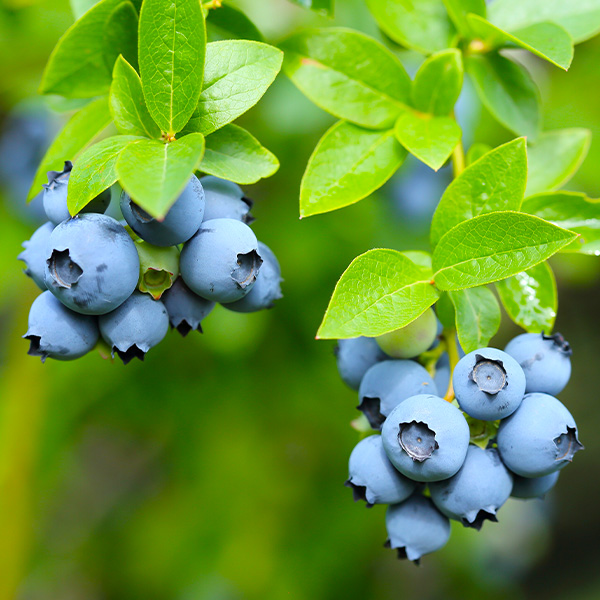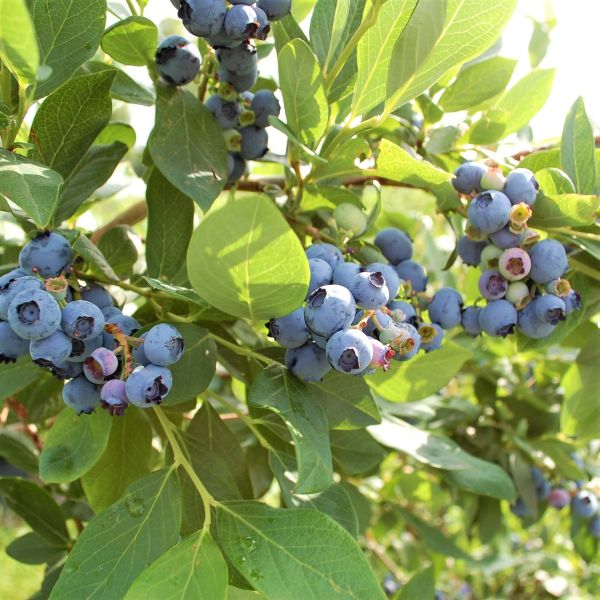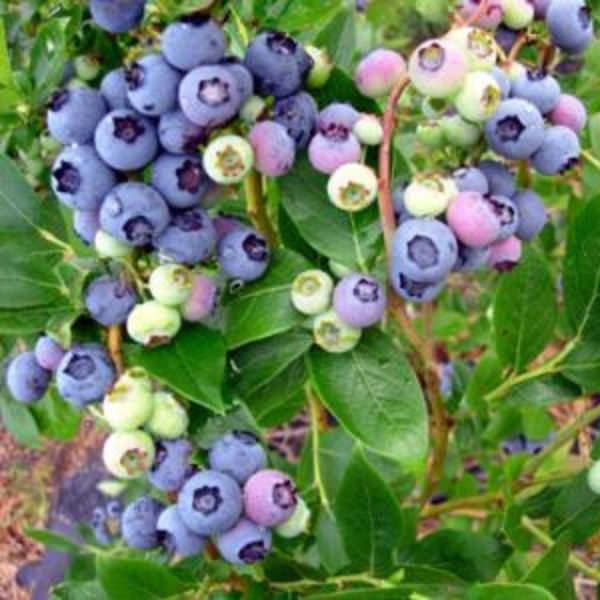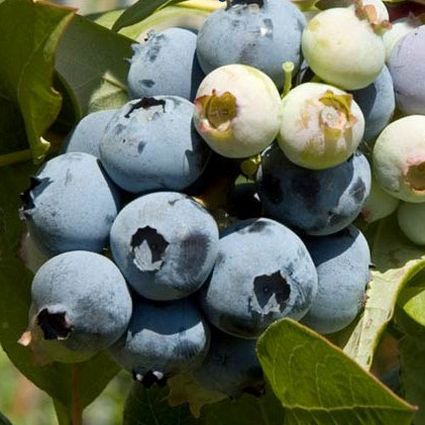


Bluecrop Blueberry
Vaccinium corymbosum 'Bluecrop'
12 reviews
Bluecrop Blueberry
Vaccinium corymbosum 'Bluecrop'
12 reviews
- Large, tasty berries
- High yield per plant
- Cold-hardy and easy to grow
- Recommended by landscape designers for optimal fit in real yards
$41.00
$59.00
30% Off
- Ships to 43215 in 3 to 7 days
- Free Shipping Over $150
- Plant Arrival Guarantee
- In Stock
- Free Plant Consult
$200 - Landscape-Approved: Every Plant We Sell Comes With Design Expertise Behind It
- Premium 1 Gallon
- 2.5 Gallon 1-2 Feet
Not just beautiful - intentionally selected by ShrubHub's 3D landscape design team to fit real-world spaces and maximize yard potential.
Why Bluecrop Blueberry?
Bluecrop Blueberry is a popular variety known for its abundant yields of medium-sized, sweet berries. This highbush blueberry bush is easy to grow and requires minimal maintenance, making it a favorite among home gardeners and commercial growers alike. The fruit is perfect for fresh eating, baking, or freezing, making it a versatile choice for any garden or orchard.
People who loved this plant also bought
Sunlight
Bluecrop Blueberry plants require full sunlight to thrive, meaning they need at least 6-8 hours of direct sunlight per day. Inadequate sunlight can lead to poor fruit production and weaker plant growth. It is important to plant them in a sunny location for
Watering
Bluecrop Blueberry plants require regular watering, especially during dry periods. They prefer consistently moist, well-drained soil to thrive. Water deeply to ensure the roots are adequately hydrated but avoid waterlogging the soil. Mulching around the ba
Fertilizing
Bluecrop Blueberries require a balanced fertilizer with equal parts nitrogen, phosphorus, and potassium. A soil test can help determine the specific nutrient needs of the plants. Blueberries also benefit from regular applications of organic matter, such as
Bluecrop Blueberry (Vaccinium corymbosum 'Bluecrop')
The Bluecrop Blueberry is a popular variety of highbush blueberry that produces medium to large-sized berries with a sweet and tangy flavor. This deciduous shrub is known for its abundant fruit production and reliable performance in a variety of growing conditions.
Bluecrop Blueberries are one of the most widely planted blueberry varieties due to their delicious fruit, excellent disease resistance, and adaptability to different climates. They are perfect for fresh eating, baking, preserves, and freezing.
This variety typically blooms in spring and produces fruit in mid to late summer. The berries are a deep blue color and have a firm texture that holds up well in storage. Bluecrop Blueberries are great for home gardeners and commercial growers alike.
Plant Bluecrop Blueberries in well-drained, acidic soil with full sun exposure for best results. Prune regularly to maintain plant health and productivity. This variety is self-pollinating but will benefit from planting other blueberry varieties nearby for increased yield.
Enjoy a bountiful harvest of delicious Bluecrop Blueberries with this versatile and easy-to-grow plant in your garden!
Plant Information:
| Botanical Name: | Vaccinium corymbosum 'Bluecrop' |
| USDA Zones: | 5 - 7 |
| Water: | Moderate to Moist |
| Exposure: | Full Sun |
| Soil Needs: | Well Drained |
| Mature Height: | 4 - 6 feet |
| Mature Spread: | 4 - 5 feet |
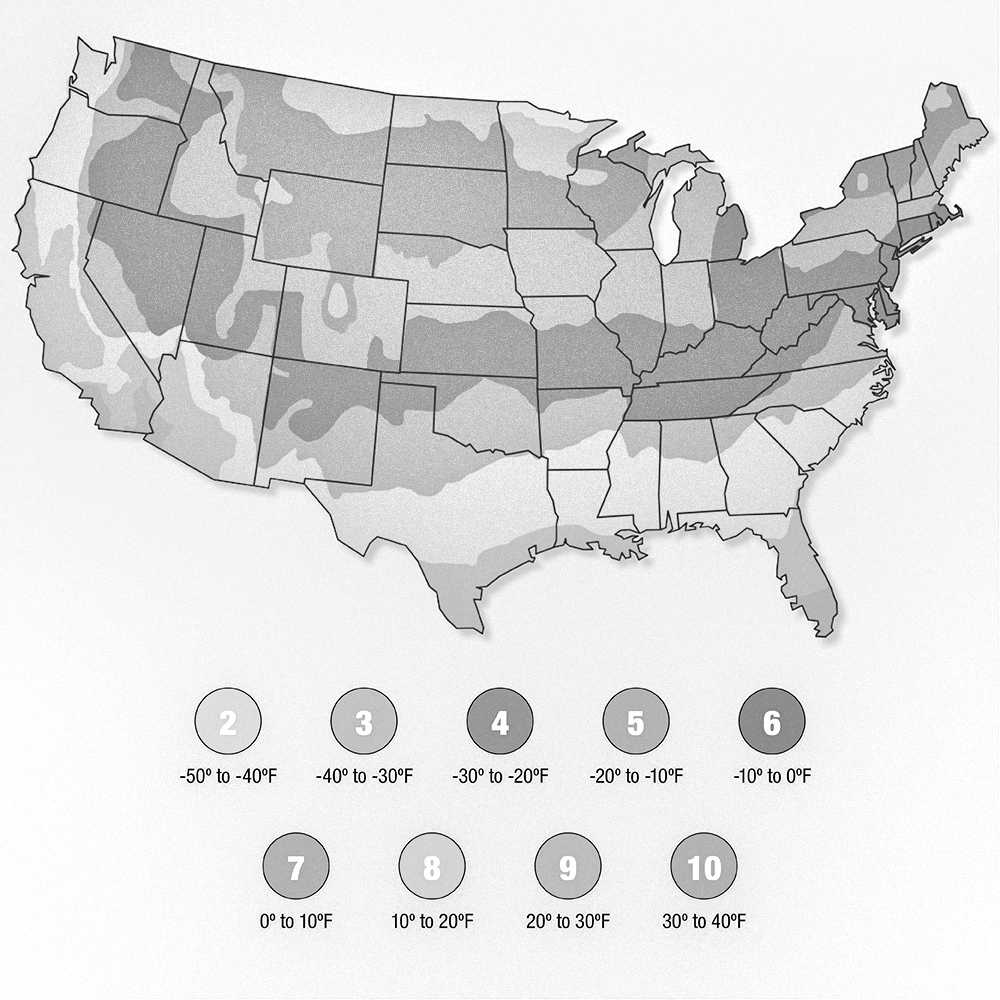



Pollination Info
Bluecrop Blueberry (Vaccinium corymbosum 'Bluecrop') Pollination Info
Bluecrop Blueberries are self-pollinating, which means that they do not require another blueberry plant for pollination. However, having multiple blueberry plants nearby can help increase fruit production and yield.
Bees are the primary pollinators of Bluecrop Blueberries. It is important to encourage bee populations in your garden by planting bee-friendly flowers and avoiding the use of pesticides that are harmful to bees.
Blueberries are typically pollinated by bees visiting the flowers to collect nectar and pollen. As the bees move from flower to flower, they transfer pollen from one flower to another, leading to fertilization and fruit development.
It is recommended to plant Bluecrop Blueberries near other blueberry varieties to ensure cross-pollination and maximize fruit production. Bees will visit multiple blueberry plants in the vicinity, increasing the chances of successful pollination.
FAQ
Bluecrop Blueberry FAQ
Q: What is Bluecrop Blueberry?
A: Bluecrop Blueberry (Vaccinium corymbosum 'Bluecrop') is a popular variety of blueberry plant known for its large, sweet berries. It is a deciduous shrub that produces fruit in mid to late summer.
Q: How do I plant Bluecrop Blueberry?
A: Bluecrop Blueberry should be planted in well-drained, acidic soil in a location that receives full sun. Space plants 4-6 feet apart and water regularly, especially during the growing season.
Q: How do I care for Bluecrop Blueberry?
A: Bluecrop Blueberry plants require regular watering, especially during hot weather. They also benefit from mulching to retain moisture and adding acidic fertilizer in the spring. Prune the plants in late winter or early spring to encourage new growth.
Q: When is the best time to harvest Bluecrop Blueberries?
A: Bluecrop Blueberries are typically ready for harvest in mid to late summer, once the berries have turned a deep blue color and are easily picked from the plant.
Q: How do I protect Bluecrop Blueberries from pests?
A: Bluecrop Blueberries are susceptible to pests such as birds, aphids, and spider mites. To protect your plants, consider using netting to keep birds away and applying insecticidal soap or neem oil for aphids and spider mites.
Q: Can I grow Bluecrop Blueberries in a container?
A: Bluecrop Blueberries can be grown in containers as long as the container is large enough to accommodate the plant's root system. Use a well-draining potting mix designed for acidic-loving plants and place the container in a sunny location.
Planting & Care
Planting & Care for Bluecrop Blueberry
Planting: Bluecrop Blueberries prefer well-draining, acidic soil with a pH of 4.5 to 5.5. Choose a sunny location with at least 6-8 hours of sunlight per day. Plant in early spring or fall, spacing bushes 4-5 feet apart.
Watering: Keep the soil consistently moist, but not waterlogged. Blueberries have shallow roots, so regular watering is essential, especially during hot, dry weather.
Fertilizing: Fertilize Bluecrop Blueberries in early spring with a balanced fertilizer, and again in late spring or early summer with a fertilizer high in nitrogen. Avoid fertilizers with high levels of phosphorus, as blueberries are sensitive to phosphorus levels in the soil.
Pruning: Prune Bluecrop Blueberries in late winter or early spring to remove any dead or damaged branches, and to open up the center of the bush for better air circulation and sunlight penetration.
Pest & Disease Control: Keep an eye out for pests such as mites, aphids, and blueberry maggots. Treat infestations with insecticidal soap or neem oil. To prevent diseases like powdery mildew or botrytis, ensure good air circulation around the plants and avoid overhead watering.
Harvesting: Bluecrop Blueberries are ready for harvest in mid to late summer when they turn a deep blue color and easily come off the plant with a gentle tug. Store harvested berries in the refrigerator for up to two weeks.
Winter Care: In colder climates, protect Bluecrop Blueberries from winter damage by covering them with a layer of mulch or straw in late fall.
Check Out These Verified Customer Reviews:
Customer Reviews
4.9 out of 5 based on 12 reviews
Thank you! Your review has been submitted.
Customer service was helpful and responsive to my inquiries about caring for the plants.
Beautiful and plump berries.
The Bluecrop Blueberries taste amazing! Sweet and juicy, just like they should be.
Item has been added to your cart.



